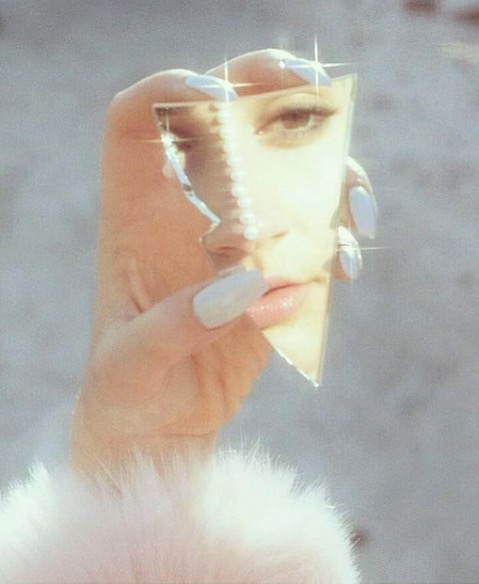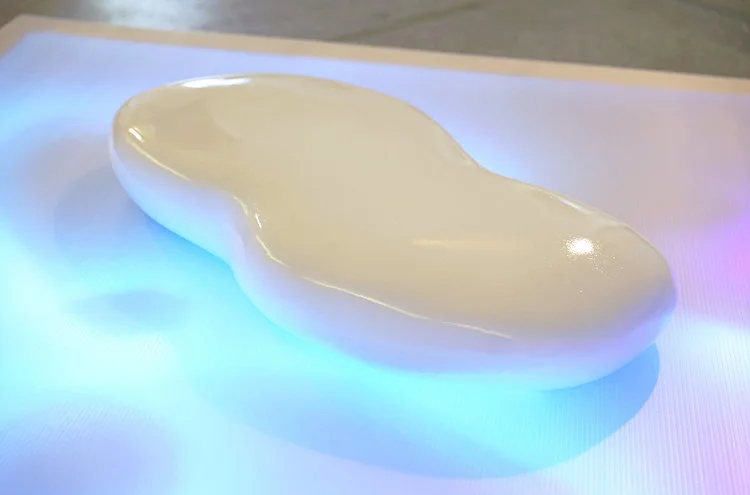Nicola Lorini
Bonis Bona, Malis Mala (exhibition view), 2018
What was your introduction to art?
I believe an introduction implies some sort of active involvement of someone, or something, deliberately introducing something to someone else. No one really introduced me to art in that sense but I had a sentimental education towards things, given by contextual and subjective circumstances, that had a strong influence on my future paths. I grew up in a small village on the Alpine foothills in North of Italy. That intimate space, very free and restricted at the same time, bucolic and desperate, was a good, scaled ground to train a critical but romantic understanding of the world. With that process of understanding a necessity of response took place as well. I remember a very clear emotional state related to a little tape recorder that my mum used as a yoga teacher. As a kid that tool embedded both the possibility of generating pleasure for me, playing songs, and the capability of becoming a tool for recording and disseminating my own voice, without necessarily being present. I still have a tape containing Amalullella, a sort of tribal/trance song recorded when I was 4 years old. That recorder was a tool for dialogue, and sound, music and landscape, meant as emotional triggers, have definitely been my first encounter with art.
Untitled (BBMM2), 2018, plastic, glaze, synthetic fabric, tuff sand, silicon; variable dimensions
Bonis Bona, Malis Mala (book), 2018, self published
What is your definition of art?
I believe art exists within the constant redefinition of itself and this process underlines the impossibility of a definition as such. I like to think at it in relation to the idea of utopia, of something perfect that is impossible to achieve but that in fact is very important to hold on to a specific vision. Art is also more than any other field of research an attempt to increase collective consciousness through subjective struggle. This comes with acts of love, political responsibilities and a good dose of fun.
Untitled, 2018, found image, glass, wood, intonachino, wall paint; 31cm x 44cm x 4cm
L’Immobile Comprensione, 2015, inkjet print on paper, black resin; variable dimensions
How would you define your work?
I see my work as a constant negotiation between a pseudo-archaeological approach and material, fragmented, romantic propositions. I am quite obsessed with how information is transmitted and interpreted through time and space and with the possibility of dismantling history from its linear rigidity, conceiving it as a tangible “pond” where human experiences and emotions gravitate. If I had to use a metaphor right now I would describe my work as a couple kissing each other in a sandstorm while undertaking, with the corner of the eye, a google research on romantic poetry, practical ways of folding clothes and palaeolithic religions.
I searched for the sun, to look for more light, I went far too deep, ended up in a fight (detail), 2018, acrylic glass, leather, wood, concrete, stone
I searched for the sun, to look for more light, I went far too deep, ended up in a fight (detail), 2018, acrylic glass
What mediums do you like to work in and why?
My work usually revolves around specific concepts, imaginaries and moods, more than around a specific media but I mainly work with physical objects in relation to space, dealing often with the paradigm of sculpture. I tend to compile, starting from a specific concept or story, a set of elements that can include photographs archive, found materials, industrial leftovers, texts and objects produced by me that then are employed as raw material to make the work. I am very much interested in how culturally charged objects, images and narratives circulate, affecting and overlapping each other and in the impact that this process has on physical entities. This is why I usually prefer to work with layers of objects and materials processes, I guess this approach comes from an investigation on how the Internet modified our cognitive capability, creating an hyper possibility of interconnections also in off-line contexts.
What do you want to accomplish with your work?
When making art you find yourself at the verge of multiple subjective and collective expectations. In that sense there are many layers of success. First of all being an artist should be something that comes from a personal necessity, when that necessity is satisfied because of the excitement of a research undertaken, the formal gratification of something produced, the tangible density of a mood that has been unfolded etc., that is already an accomplishment. The most important one probably. Then your thought should become relevant within a dialogue with other artists and, even more, finds its way to establish a contact with a broader audience, becoming potentially influent for a collective growth. It is a sort of pyramid where every steps has its own form of gratification. This counts for every artist I supposed. Thinking about my work in more practical terms there are two things that are very important for me: on one hand how the work resonates as an independent entity that can be emotionally encountered without any contextual explanation, on the other hand how it can become the interface to access a more complex set of discourses and concerns. I think a good work of art should be an existential trigger, if not for the rest of humanity, for the next week or, at least, for the next five minutes.
courtesy NICOLA LORINI
interview HANNAH GLENN
What to read next







